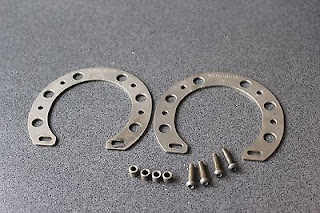You go for a ride on a hot day. Then, at your destination--or simply a stop along the way--you sit under a tree, even if only for a couple of minutes.
Of course, the purpose of this ride is to raise funds--"seed money", if you will--to start their project. Their goal--apart from getting back to Connecticut for the start of the school year--is for their idea to spread to as many schools as possible. They are collaborating with the Northwest Conservation District, which will receive their funds and applications (presented by students themselves) for trees to be planted at their schools. Those with the greatest need will receive first priority, according to Lehner and Rodrigues.
Now, who wouldn't like that? And what would make it better? How about picking something from that tree and eating it?
I've been fortunate enough to do that. You probably know that even the best apple, grape, cherry or pear from your favorite farmer's market--let alone anything on which you can spend half of your paycheck at Whole Foods--tastes quite as good.
Needless to say, whenever I've had the chance to stop for the freshest possible snack, I wasn't riding in my hometown. Nor was I in any big city or suburban area. On those days, my ride took me into the countryside--whether in Vermont, the southwest of France or upstate. If you find a fruit tree in a city, chances are their bounty isn't edible: That tree is, more than likely, ornamental. Or they are grown for other purposes--like the orange trees I saw in towns along the Turkish Aegean coast, whose bitter fruit is used to make marmelade.
Imagine what it would be like to take a city ride and pick your snack off a tree. Better yet, imagine what it would be like for some kid in a urban ghetto to get a healthy snack or lunch from a tree in the schoolyard.
That is what Brett Lehner and Sonali Rodrigues have in mind.
They are medical students at the University of Connecticut who believe that access to fruit, and all other healthy food, is "a human right" that "should be available to everyone", in Lehner's words.
So, he and Rodrigues are about to embark on an "Apple A Day" bike ride. But it won't be just any old bike ride: They're going to pedal the 3500 miles (5500 kilometers) along the northern tier route from the Pacific coast of Washington State to Connecticut.
Of course, the purpose of this ride is to raise funds--"seed money", if you will--to start their project. Their goal--apart from getting back to Connecticut for the start of the school year--is for their idea to spread to as many schools as possible. They are collaborating with the Northwest Conservation District, which will receive their funds and applications (presented by students themselves) for trees to be planted at their schools. Those with the greatest need will receive first priority, according to Lehner and Rodrigues.
Riding bikes and planting fruit trees: Those sound like good practices to me!
P.S. I rode to Connecticut yesterday. More about that later.
P.S. I rode to Connecticut yesterday. More about that later.











